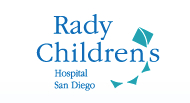Study of Vinblastine and Sirolimus in Pediatric Patients With Recurrent or Refractory Solid Tumors Including Central Nervous System Tumors
| Status: | Completed |
|---|---|
| Conditions: | Cancer, Brain Cancer, Neurology |
| Therapuetic Areas: | Neurology, Oncology |
| Healthy: | No |
| Age Range: | Any - 21 |
| Updated: | 11/30/2013 |
| Start Date: | April 2010 |
| End Date: | April 2012 |
| Contact: | Rosana Yankanah |
| Email: | rosana.yankanah@sickkids.ca |
| Phone: | 416-813-7654 |
A Phase I Study of Vinblastine and Sirolimus in Pediatric Patients With Recurrent or Refractory Solid Tumors Including CNS Tumors
This study is a Phase I study using vinblastine and sirolimus in patients with relapsed
solid tumors including selected brain tumors and lymphoma. The investigators hypothesis is
that the combination administration of weekly vinblastine and sirolimus is safe.
Published data demonstrating a survival advantage of the vinblastine-sirolimus regimen vs
single agent in an orthopotic neuroblastoma mouse model and our unpublished data support a
VBL in vitro pro-apoptotic plasma concentration of 1-2 nM range and an anti angiogenic
concentration of 2pM. These plasma concentrations are achievable with a 6 mg/m2 (apoptosis)
and 1 mg/m2 VBL regimen (anti-angiogenesis) weekly regimen. We expect that vinblastine
delivered at any given dose, as described in the protocol, will carry both anti-apoptotic
and antiangiogenic activity. Safety and preliminary efficacy of both drugs in pediatric
tumors support the development of a clinical trial.
Inclusion Criteria:
1. Age: 0-21 years at the time of diagnosis
2. Diagnosis: Histologic verification at either the time of original diagnosis or
relapse of solid tumor including CNS tumors or lymphomas
3. Disease Status: All refractory/recurrent solid tumors including CNS tumors (all
Diffuse Intrinsic Brain Stem Gliomas excluded) and lymphomas that have relapsed
after, or are refractory to, a chemotherapy-containing treatment regimen
4. Measurable disease:
- Measurable tumor by CT or MRI defined as >10 mm by spiral CT in at least one
dimension
5. Current disease state must be one for which there is currently no known curative
therapy
6. A negative urine pregnancy test is required for female participants of child bearing
potential
7. Organ Function Requirements:
- adequate liver function as defined by AST or ALT < 5 x upper limit of normal,
bilirubin ≤1.5 X upper limit of normal
- adequate renal function: Serum creatinine < 1.5 X upper limit of normal for age
8. Adequate Bone Marrow Function Defined as:
- ANC ≥ 1000/mm3, platelets ≥ 75,000/mm3 and hemoglobin ≥ 90 g/L
- Transfusions are permitted to meet these platelet and Hgb criteria, if the
patient is known to have a history of bone marrow involvement with tumor
- Patients with platelet counts < 75,000/ mm3 who are refractory to platelet
transfusions are not eligible for this study
- Patients requiring transfusions of platelets or RBC to meet eligibility criteria
will not be evaluable for platelet or hgb/hct hematological toxicity
9. Lansky Play Score (for patients < 16 years of age) must be more than 50 and/or ECOG
performance status (for patients ≥ 16 years of age) must be 0 to 2
10. Specific requirements for Neuroblastoma patients Stratum:
- MIBG scan with positive uptake at minimum of one site (MIBG not required if
subject's neuroblastoma is previously determined to not uptake MIBG and no
measurable disease)
- Bone marrow with tumor cells seen on routine morphology (not by NSE staining
only) of bilateral aspirate and /or biopsy on one bone marrow sample
11. Written informed consent
Exclusion Criteria:
1. Lansky score <50%
2. Investigational Drugs: Patients who are currently receiving another investigational
drug(s)
3. Previous treatment with Vinblastine and/or mTor inhibitors
4. Anti-cancer Agents: Patients who are currently receiving other anticancer agents.
Patients must have fully recovered from the effects of prior chemotherapy, generally
at least 3 weeks from the most recent administration (6 weeks for nitrosoureas)
5. Infection: Patients who have an uncontrolled infection are not eligible until the
infection is judged to be well controlled
6. Patients who, in the opinion of the investigator, may not be able to comply with the
safety monitoring requirements of the study, or in whom compliance is likely to be
suboptimal
7. One week from usage of hematopoietic Growth Factor
8. Patients who are refractory to platelet transfusions
9. Brain Stem Glioma patients
We found this trial at
3
sites
Fletcher Allen Health Care As Vermont’s University Medical Center, we at Fletcher Allen are committed...
Click here to add this to my saved trials
Rady Children's Hospital - San Diego Rady Children's Hospital-San Diego is the region’s pediatric medical...
Click here to add this to my saved trials
Click here to add this to my saved trials

